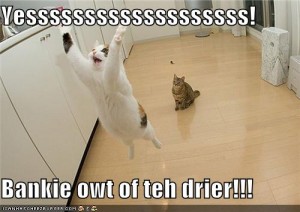PE Project Link
March 9, 2011All of the documents you could possibly want (and more) are located at this website:
You don’t even have to navigate away from that site to access the materials!
How cool is “The Cloud?”
All of the documents you could possibly want (and more) are located at this website:
You don’t even have to navigate away from that site to access the materials!
How cool is “The Cloud?”
I am a bad blogger. The people who are good at this write several times a week. Maybe my PDCA should be to blog once a month.
—————————–
I want to let you know, my Middle School Students, that I FEEL YOUR PAIN. About writing. (But it isn’t going to change me from being the Citation Nazi for the rest of your school career.)
I told you in class how I found a story I’d started like three years ago, and actually had the urge to finish it. So I’ve been writing on it. And it is hard! I have these ideas and images and plot elements in my head, but then it comes to put it on paper and it is nothing like what I’m seeing. For example, the main character shares some very significant news with her best friend…and the best I can come up with is
M. stepped over and hugged her. “Ah, I’m sorry. But girl, your life is messed up.”
T. returned her hug thankfully. “You’re not kidding.”
There should be a LOT more emotion in that. A lot more description. And yes, mine is a rough draft that I may never take to a final, publishable copy…but still, I want to say more and I just end up with boring words. Really…M. is furious at T. for the position she’s put herself in, but knows that there’s no way for T. to change things. And she just steps up and hugs her. Awww. (eye roll)
So I feel your pain. We asked you to write a Historical Fiction piece. Some of you really got the objective of the assignment and produced a good product. But I saw others of you just hate the assignment…because writing good (historical) fiction is hard.
I’m not sure I have any earth-shattering encouragement or reassurance for you (or if you even want any from your teacher) but I’m going to type them anyway. You will be writing for us for the next four to five years and if you dread it as much as a Senior as you do now, we haven’t really done part of our job as teachers. So here’s what I think will help…
Mrs. Stading’s Encouragement for Writing Fiction
1. If you read fiction, you’ll get better at writing fiction.
2. The more pre-planning you put into your stories, the easier they will be to write. (Honestly, the plot map — you know, that line that looks like a mountain? — is SO helpful. Do it.)
3. Give yourself time to THINK on what you are writing. Don’t wait until the last minute.
4. Find some way to put your personal interests into your writing. (Admittedly, I’m going to get bored if every story you all submit is somehow related to basketball. But if it makes you a better writer, I’ll get over it!)
5. Collaborate about your writing. Read it to a peer…or three, especially your peers who are readers. Bounce ideas off someone who is interested in what you are writing. (My sister is like, just get that story done already, as many ideas as she’s been hearing…she wants to read it. I told her she’d read it sooner if she typed it up for me. I haven’t heard back from her since then. :-] )
——————————–
Fiction writing doesn’t go away — you’ll be writing a myth soon — let’s learn how to do this better together. I’ll keep at my story if you’ll strive to better writers in yours. Deal?
 You all were *so* engaged with the Lotus Diagram for planning fund raising activities. How can we do more things like this and still get better at writing? Because let’s face it…you get better at writing by…wait for it…writing. Yet your interests are in the planning of things. What ideas do you have so we can plan and write at the same time?
You all were *so* engaged with the Lotus Diagram for planning fund raising activities. How can we do more things like this and still get better at writing? Because let’s face it…you get better at writing by…wait for it…writing. Yet your interests are in the planning of things. What ideas do you have so we can plan and write at the same time?
A Lotus Diagram is a tool to focus one’s thinking on the parts of a whole, or to categorize information. It can be a useful tool to plan your writing!
Here are some links.
Same name, but not related…try this in your free time.
You’ve heard of a “Question of the Day” but have you considered an “Answer of the Day?” (I am totally stealing this idea from Miss Taylor because it is so very cool.) Can you come up with a question to which the following would be the answer? I have specific question in mind, can you guess it? And no boring questions like, “What is the first letter of the name ‘Xeres’?” or “What is the 24th letter of the alphabet?”
Yes, this has a “Trivial Pursuit” quality to it…do you really need to know this information? Probably not. But thinking about quality questioning will make you a better reader…writer…thinker. So here you go:
Answer: The letter X
(Post your questions in the comments.)
Why do we use a Parking Lot?
I’ll post some examples of other Parking Lots once I get the RED X thing figured out for pictures on my blog.